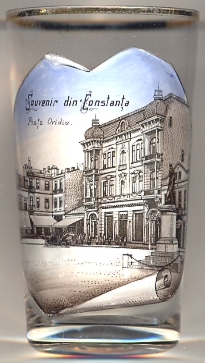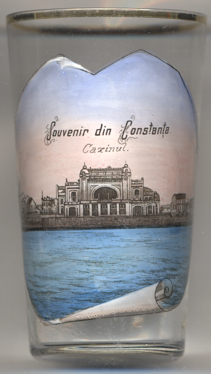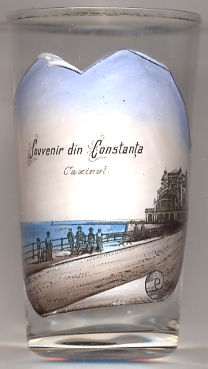

|
| ROMÂNIA | ROMANIA |
| județ Constanța | Constanța County |
Constanța, historically known as Tomis, is the oldest extant city in Romania. The city is located in the Dobrugea region of Romania, on the Black Sea coast. It is the capital of Constanța County and the largest city in the region. The Constanța metropolitan area includes 14 localities within 30 km of the city, and, with 387,593 inhabitants, it is the third largest metropolitan area in Romania. The Port of Constanța has an area of 39.26 km² and a length of about 30 km. It is the largest port on the Black Sea, and one of the largest ports in Europe.
Tomis (also called Tomi) was a Greek colony in the province of Scythia Minor on the Black Sea shore, founded around 600 BC for commercial exchanges with the local Getic populations. In 29 BC the Romans captured the region and annexed it as far as the Danube, under the name of Limes Scythicus. In AD 8, the Roman poet Ovid was banished here by Augustus, where he found his death eight years later. He laments his exile in Tomis in his poems 'Tristia' and 'Epistulae ex Ponto'. Tomis was "by his account a town located in a war-stricken cultural wasteland on the remotest margins of the empire". A number of inscriptions found in the city and its vicinity show that Constanța lies where Tomis once stood. The city was afterwards included in the Province of Moesia, and, from the time of Diocletian, in Scythia Minor, of which it was the metropolis. After the split of the Roman Empire, Tomis fell under the rule of the Eastern Roman Empire. Tomis was later renamed to Constantiana in honour of Flavia Julia Constantia, the half-sister of Constantine the Great (272–337). The earliest known usage of this name was Κωνστάντια (Konstantia) in 950. The city lay at the seaward end of the Great Wall of Trajan, and has evidently been surrounded by fortifications of its own. After successively becoming part of the Bulgarian Empire for over 500 years, and later of the independent principality of Dobrotitsa/Dobrotici and of Wallachia, Constanța fell under the Ottoman rule around 1419. In 1878, after the Romanian War of Independence, Constanța and the rest of Northern Dobrudja were ceded by the Ottoman Empire to Romania. The city became Romania's main seaport and transit point for much of Romania's exports. On October 22, 1916 (during World War I), the Central Powers (German, Turkish and Bulgarian troops) occupied Constanța. According to the Treaty of Bucharest in May 1918 (which has never been ratified by Romania), Constanța remained under the joint control of the Central Powers. Allied troops liberated the city in 1918 after the successful offensive on the Thessaloniki front knocked Bulgaria out of the war. In the interwar years, the city became Romania's main commercial hub, so that by the 1930s over half of the national exports were going through the port. During World War II, when Romania joined the Axis powers, Constanța was one of the country's main targets for the Allied bombers. While the town was left relatively undamaged, the port suffered extensive damage, recovering only in the early 1950s.

 Ovid Square (Piața Ovidiu) [left], named for the Roman poet Publius Ovidius Naso (43 BC–AD 17/18),
is one of the central squares of Constanța.
Ovid Square (Piața Ovidiu) [left], named for the Roman poet Publius Ovidius Naso (43 BC–AD 17/18),
is one of the central squares of Constanța.
 monument
monument


The  Casino (Cazinoul) [near left, no. 3808, and right, no. 2740]
was completed between the two World Wars in Art Nouveau style according to the plans of the architects Daniel Renard and
Petre Antonescu.
Casino (Cazinoul) [near left, no. 3808, and right, no. 2740]
was completed between the two World Wars in Art Nouveau style according to the plans of the architects Daniel Renard and
Petre Antonescu.
| While Constanța was named for Flavia Julia Constantia, half-sister of Constantine the Great, Konstanz in Germany obtained its name either from emperor Constantius Chlorus, father of both Constantine the Great and Flavia Julia Constantia, or from Constantius II, son of Constantine the Great. |
[http://en.wikipedia.org/wiki/Constanța]
![[scale]](lineal.jpg)